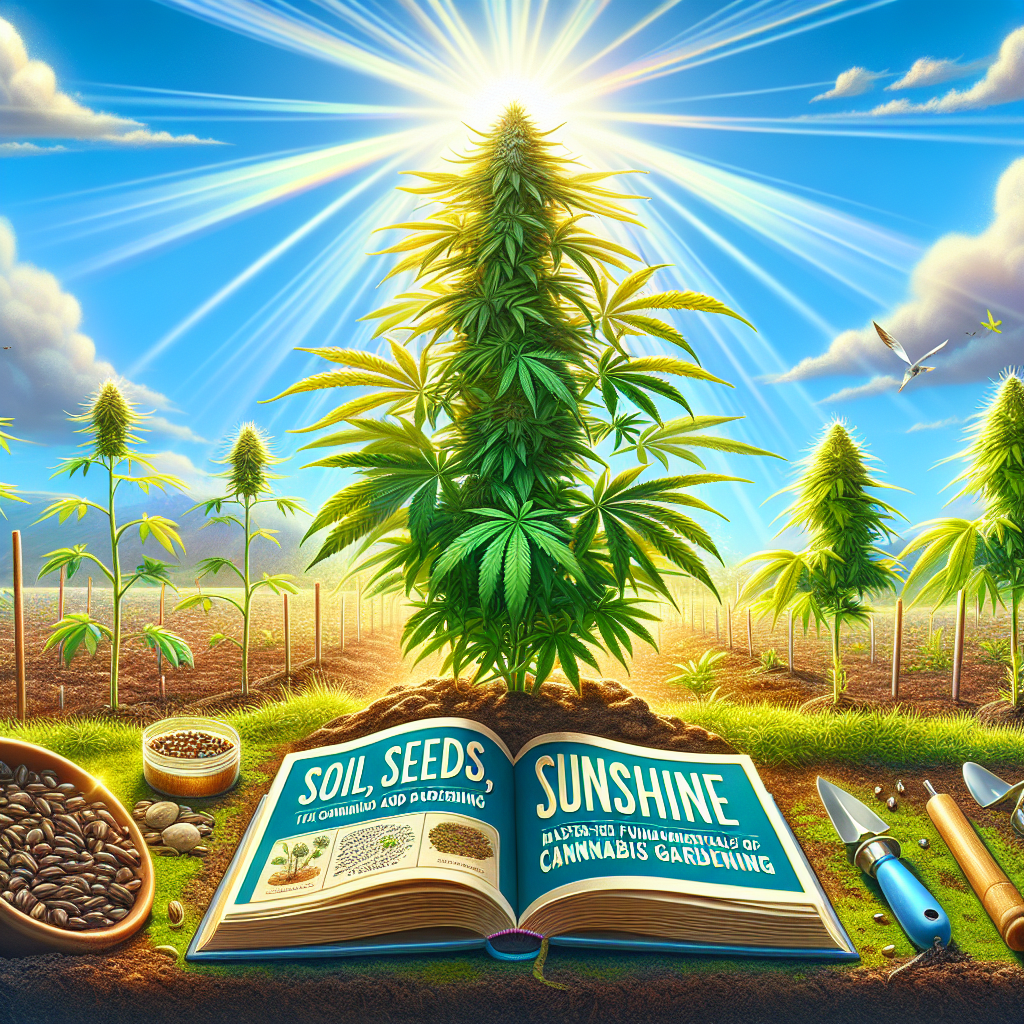Cannabis gardening has surged in popularity as legalization spreads across the globe. Cultivating this unique plant can be immensely satisfying, offering both personal rewards and the promise of a fruitful harvest. However, mastering the fundamentals—soil, seeds, and sunshine—is vital for success. This guide dives deep into these three main components, ensuring you have the knowledge to grow healthy, robust cannabis plants.
Soil: The Foundation of Growth
When it comes to cannabis gardening, the type and quality of soil you use are paramount. Cannabis thrives in well-aerated, nutrient-rich substrates, which can be achieved through different soil types and amendments. Here are some key components to consider:
1. Soil Type
While you can certainly use pre-mixed cannabis soil from a garden store, understanding soil composition can give you added knowledge and flexibility. Cannabis prefers loamy soils—those with a balance of sand, silt, and clay. Sandy soils drain well but may lack nutrients, while clay retains moisture but can become compacted.
2. pH Levels
The pH level of your soil significantly affects nutrient availability. Ideally, cannabis plants prefer a pH of 6.0 to 7.0 when grown in soil. If your soil is too acidic or too alkaline, certain nutrients might become locked out, leading to deficiencies or toxicities. Testing kits are available and can help ensure your soil is within optimal ranges.
3. Organic Amendments
To enhance your soil, incorporating organic materials like compost, worm castings, bone meal, and fish emulsion can significantly improve nutrient content and microbial activity. These organic amendments feed the plants and improve soil structure, promoting healthy root growth.
4. Soil Retention
Proper drainage is critical to avoid root rot. Ensure your pots or garden beds have adequate drainage holes. Utilizing a mix of coconut coir or perlite can help retain moisture while improving aeration.
Seeds: The Starting Point
Selecting the right seeds is equally important. Cannabis seeds come in various strains, each with unique characteristics that affect growth, yield, and effects. Here’s how to choose wisely:
1. Strain Selection
Deciding between Indica, Sativa, or hybrids is essential based on your desired effects and growth characteristics. Indica strains often yield physically relaxing effects, while Sativa strains tend to be uplifting and energetic. Hybrids combine traits of both.
2. Seed Quality
Not all seeds are created equal. Look for reputable breeders who offer feminized seeds to maximize your yield. Feminized seeds produce only female plants, which are the ones that produce buds. Regular seeds can result in both male and female plants; males are typically culled since they don’t produce usable flowers.
3. Germination Techniques
After selecting high-quality seeds, proper germination is the next step. You can germinate seeds using the paper towel method, soaking them in water for 24 hours, or planting them directly into moist soil. Each method has its merits, but regardless of your choice, ensure the environment is warm and dark to encourage sprouting.
Sunshine: The Essential Element
Light is perhaps the most critical factor in any plant’s growth, and cannabis is no exception. Depending on whether you’re growing indoors or outdoors, your approach to light will differ:
1. Natural Sunlight
Outdoor growers are fortunate to harness the sun’s natural light, which is ideal for photosynthesis. Aim for a location where your plants receive 6-8 hours of direct sunlight each day. Ensure the area is protected from high winds and has good air circulation.
2. Indoor Lighting
If you’re growing indoors, quality lighting can make a significant difference. Options like LED, HPS (High-Pressure Sodium), or MH (Metal Halide) lights are popular among indoor growers. Each has its spectrum, with blue light beneficial for vegetative growth and red light encouraging flowering. Timers can help regulate light cycles, mimicking natural growth patterns.
3. Light Cycle
During the vegetative stage, cannabis plants generally require 18 hours of light and 6 hours of darkness daily, transitioning to a 12/12 light cycle as they enter the flowering stage. Proper management of light exposure is crucial in preventing stress and optimizing yield.
FAQs
1. How often should I water my cannabis plants?
Watering frequency depends on numerous factors, including the size of the plant, pot size, type of soil, and environmental conditions. A good rule of thumb is to let the top inch of soil dry out before watering again.
2. Can I grow cannabis without special soil?
While it’s possible to grow cannabis in generic potting soil, using soil specifically formulated for cannabis will provide better results and reduce the risk of nutrient deficiencies.
3. How do I know if my plants are male or female?
You can typically distinguish male plants from females by observing the pre-flowers that appear during the flowering stage. Female plants will develop small bud sites, while male plants will produce pollen sacs.
4. How can I prevent pests and diseases?
Regularly inspecting your plants, maintaining good air circulation, and using organic pest control methods like neem oil can help keep your plants healthy and free from infestations.
5. Do cannabis plants require any specific nutrients?
Yes, cannabis plants have specific nutrient requirements. During the vegetative stage, they need higher nitrogen levels, while in the flowering stage, they require more phosphorus and potassium. Quality fertilizers can help meet these needs.
By mastering the essentials of soil, seeds, and sunshine, you’re on the right path to a successful cannabis gardening journey. Happy growing!





